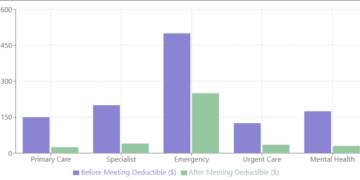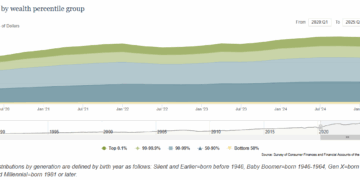President Trump has signed the One Big Beautiful Bill Act into law, and I want to walk you through what Title VI means for environmental programs and federal spending. This title, overseen by the Committee on Environment and Public Works, represents a significant shift in how our government approaches environmental initiatives and contains some important changes that will affect various sectors.
The Big Picture: Two Contrasting Approaches
Title VI takes a dual approach that reflects the current administration’s priorities. The vast majority of its 26 sections focus on rescinding funding from existing environmental and climate programs, while simultaneously providing substantial new funding for infrastructure projects and establishing new fee mechanisms for environmental reviews.
Major Environmental Program Funding Rescissions
The most significant aspect of Title VI involves the rescission of unobligated balances from numerous environmental programs. Let me break down the key areas affected:
Clean Air and Emissions Programs: The Act eliminates remaining funding for clean heavy-duty vehicle programs under Section 132 of the Clean Air Act. Additionally, it repeals the entire Greenhouse Gas Reduction Fund established under Section 134 of the Clean Air Act, rescinding all unobligated funds. Diesel emissions reduction programs also lose their remaining funding, along with general air pollution reduction initiatives and specific programs targeting air pollution at schools.
Energy and Climate Initiatives: The low emissions electricity program loses its funding under Section 135 of the Clean Air Act. The Act also rescinds funds for renewable fuel standard implementation, enforcement technology development, and greenhouse gas corporate reporting requirements.
Environmental Justice and Community Programs: Environmental and climate justice block grants established under Section 138 of the Clean Air Act will no longer receive their allocated funding. The neighborhood access and equity grant program also faces funding rescission.
Federal Building and Transportation Programs: Several programs focused on sustainable federal operations lose funding, including initiatives for low-carbon materials in federal buildings, emerging sustainable technologies through the General Services Administration, and low-carbon transportation materials grants.
Regulatory and Oversight Functions: The Act eliminates funding for environmental product declaration assistance, environmental review implementation, and EPA programs designed to ensure efficient and timely reviews.
Important Exception: Methane Emissions Program
While most programs face complete funding rescission, the methane emissions and waste reduction incentive program for petroleum and natural gas systems receives different treatment. The Act rescinds funding for incentive portions of the program but extends the overall program timeline from 2024 to 2034, suggesting continued federal interest in methane regulation through other mechanisms.
New Funding: Kennedy Center Investment
In contrast to the environmental program cuts, Title VI provides substantial new funding for the John F. Kennedy Center for the Performing Arts. The Act appropriates $256.7 million for fiscal year 2025, available through September 2029, specifically for capital repair, restoration, maintenance backlog, and security structures. This represents a significant federal investment in cultural infrastructure, with up to three percent of funds available for administrative costs.
Environmental Review Fee System
Perhaps the most innovative aspect of Title VI establishes a new fee-based system for environmental reviews under the National Environmental Policy Act. This system allows project sponsors to pay fees to expedite environmental assessments and environmental impact statements.
Under the new framework, project sponsors can submit project descriptions and fee payment intentions to the Council on Environmental Quality. The Council must provide fee notices within 15 days, and sponsors who pay these fees receive guaranteed timelines: environmental assessments must be completed within 180 days of fee payment, while environmental impact statements must be finished within one year of publishing the notice of intent.
The fee structure requires sponsors to pay 125 percent of anticipated preparation costs, or 125 percent of supervision costs when sponsors prepare their own assessments. This creates a user-pays system that could significantly speed up environmental review processes for those willing and able to pay.
What This Means for You
These changes will have varying impacts depending on your interests and involvement with federal programs. If you work in environmental consulting, renewable energy, or sustainable technology sectors, you may see reduced federal support and funding opportunities. However, the new fee-based environmental review system could create new revenue streams for environmental consulting firms while potentially speeding project approvals.
For communities that benefited from environmental justice programs or air quality improvement initiatives, the funding rescissions may mean reduced federal support for local environmental improvements. Organizations that relied on federal grants for clean air initiatives, sustainable transportation, or environmental data collection will need to seek alternative funding sources.
The Kennedy Center funding demonstrates that the Act does include significant federal investments, though focused on cultural rather than environmental infrastructure. This suggests federal spending continues in selected priority areas while environmental programs face reduced support.
The environmental review fee system represents a fundamental shift toward user-funded regulatory processes, which could benefit developers and infrastructure projects with adequate resources while potentially creating barriers for smaller projects or organizations with limited funding.
Title VI reflects a clear reorientation of federal environmental policy, moving away from grant-based support for climate and environmental initiatives while maintaining regulatory frameworks through alternative funding mechanisms. Understanding these changes will be crucial for anyone working in environmental sectors or relying on federal environmental programs.
For more content, check out the following:
- Understanding Title I of the One Big Beautiful Bill Act: What These Agricultural and Nutrition Changes Mean for You
- Breaking Down the One Big Beautiful Bill Act: What Title II Means for Defense and National Security
- Breaking Down the One Big Beautiful Bill Act: Title III and Its Impact on Financial Oversight
- Breaking Down Title IV of the One Big Beautiful Bill Act: What It Means for Commerce, Science, and Transportation
- Understanding Title V of the One Big Beautiful Bill Act: Energy and Natural Resources

















































